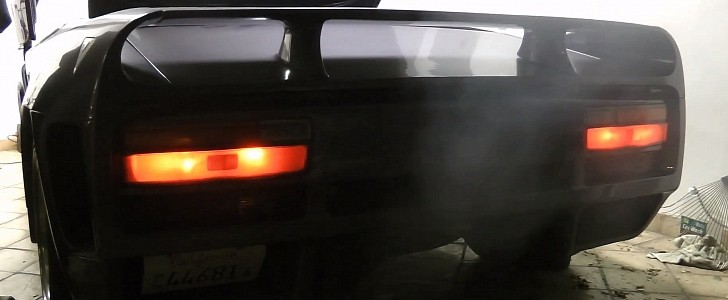When it comes to supercars, there are quite a few U.S. automakers that compete in this niche right now. There's small shops like Hennessey, Shelby Super Cars, and Scuderia Cameron Glickenhaus, while Ford joined in a few years ago with the second-generation GT. The latest, mid-engined Chevrolet Corvette will also enter the supercar realm when the next-generation ZR1 arrives.
But it wasn't always like that. U.S. carmakers were very late to the supercar party. The Saleen S7, an early example, entered production in 2000. Before that, there was the Vector W8, the car credited to be the first American-built supercar to compete with products from Ferrari and Lamborghini.
Built in just 22 units from 1989 to 1993, the W8 hit the streets with a twin-turbo V8 engine officially rated at 625 horsepower (but good for up to 1,200 horses at higher boost pressure). Vector claimed a 0-to-60 mph (97 kph) sprint of 3.9 seconds and a top speed of 242 mph (389 kph), both impressive figures for the early 1990s.
But the W8 wasn't the only supercar penned by Vector mastermind Gerald Wiegert. He also developed a successor, called the WX-3. An evolution of the W8, it featured a brand-new engine under the hood and revised bodywork. Unlike the W8, the WX-3 was envisioned with three engine choices, including a range-topping, twin-turbo 7.0-liter V8 good for 1,200 horsepower.
Sadly, the WX-3 project was halted before it could become a production car. Following a hostile takeover by Megatech, which went on to purchase Lamborghini in 1994, Wiegert was fired from his own company. The only two prototypes, a coupe and a roadster, remained in his possession.
The whereabouts of these cars is unknown right now, but the cars remained in the Wiegert family at least a couple of decades after they were built. The footage below shows the purple roadster idling and revving in a garage and that proprietary 7.0-liter V8 sounds amazing. It's a unique blend of piercing F1 exhaust notes and the low-end gurgling of a vintage muscle car.
The video also gives us a glimpse at the car's infotainment system. It has a really basic display and physical buttons and switches, but it was an advanced unit for 1993.
Seeing the outlandish design and hearing that big V8 engine roar makes me wonder what would have happened to Vector if the WX-3 had made it into production.
Built in just 22 units from 1989 to 1993, the W8 hit the streets with a twin-turbo V8 engine officially rated at 625 horsepower (but good for up to 1,200 horses at higher boost pressure). Vector claimed a 0-to-60 mph (97 kph) sprint of 3.9 seconds and a top speed of 242 mph (389 kph), both impressive figures for the early 1990s.
But the W8 wasn't the only supercar penned by Vector mastermind Gerald Wiegert. He also developed a successor, called the WX-3. An evolution of the W8, it featured a brand-new engine under the hood and revised bodywork. Unlike the W8, the WX-3 was envisioned with three engine choices, including a range-topping, twin-turbo 7.0-liter V8 good for 1,200 horsepower.
Sadly, the WX-3 project was halted before it could become a production car. Following a hostile takeover by Megatech, which went on to purchase Lamborghini in 1994, Wiegert was fired from his own company. The only two prototypes, a coupe and a roadster, remained in his possession.
The whereabouts of these cars is unknown right now, but the cars remained in the Wiegert family at least a couple of decades after they were built. The footage below shows the purple roadster idling and revving in a garage and that proprietary 7.0-liter V8 sounds amazing. It's a unique blend of piercing F1 exhaust notes and the low-end gurgling of a vintage muscle car.
The video also gives us a glimpse at the car's infotainment system. It has a really basic display and physical buttons and switches, but it was an advanced unit for 1993.
Seeing the outlandish design and hearing that big V8 engine roar makes me wonder what would have happened to Vector if the WX-3 had made it into production.


